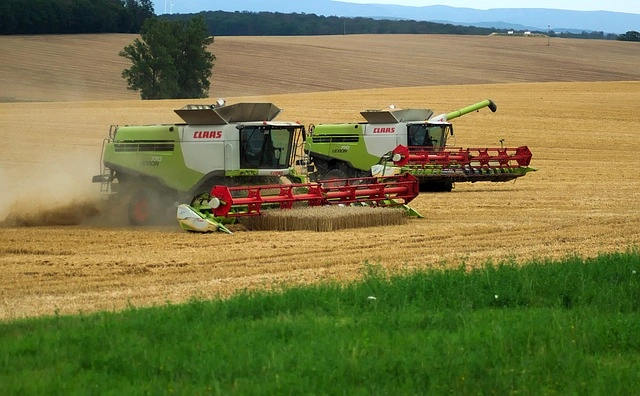Investing in a new combine is one of the most significant decisions a farmer can make. With prices for new models reaching $500,000 or more, it’s crucial to evaluate whether now is the right time to buy. This article explores the economic, operational, and market factors to consider when deciding if it’s time to upgrade your combine, backed by real-world data and expert insights.
1. The Cost of a New Combine
- Current Market Prices: New combines from leading brands like John Deere, Case IH, and Claas can cost between 300,000and600,000, depending on features and capacity.
- Financing Options: Many dealers offer financing with low-interest rates, but monthly payments can still range from 5,000to10,000.
- Depreciation: A new combine can lose 20-30% of its value in the first year, making timing a critical factor.
2. When Is the Best Time to Buy?
End of the Harvest Season
- Why: Dealers often offer discounts to clear inventory before the new model year.
- Example: In 2022, John Deere offered $20,000 rebates on S700 Series combines at the end of the harvest season.
Trade-In Opportunities
- Why: Trading in an older combine can significantly reduce the upfront cost.
- Example: A 2015 John Deere S670 with 1,500 separator hours might fetch $150,000 as a trade-in, reducing the cost of a new model.
Market Conditions
- Why: Grain prices and farm income levels influence purchasing power.
- Example: In 2021, high corn and soybean prices led to a 15% increase in combine sales as farmers upgraded equipment.
3. Key Factors to Consider Before Buying
Age and Condition of Your Current Combine
- Rule of Thumb: If your combine is over 10 years old or requires frequent repairs, it may be time to upgrade.
- Cost of Repairs: A major repair like replacing the engine or transmission can cost $50,000 or more, making a new purchase more economical in the long run.
Farm Size and Crop Volume
- Small to Mid-Sized Farms: A used or smaller combine might be more cost-effective.
- Large Farms: High-capacity models like the John Deere X9 1100 (which can harvest 30 acres per hour) may justify the investment.
Technology and Features
- Precision Agriculture: New combines come equipped with advanced features like auto-steer, yield monitoring, and real-time data analytics.
- Example: The Case IH Axial-Flow 250 Series offers integrated telematics, helping farmers optimize harvest efficiency and reduce downtime.
4. Economic Considerations
Tax Benefits
- Section 179 Deduction: Farmers can deduct up to $1,080,000 for equipment purchases in 2023, reducing taxable income.
- Bonus Depreciation: Allows an additional 80% deduction for new equipment in the first year.
Resale Value
- Depreciation Rates: Combines depreciate fastest in the first 3-5 years, so timing your purchase and resale is critical.
- Example: A 2020 John Deere S780 with 1,000 hours might sell for 300,000∗∗,comparedtoitsoriginalpriceof∗∗450,000.
Operating Costs
- Fuel Efficiency: Newer models are more fuel-efficient, saving 10-15% on fuel costs compared to older combines.
- Labor Savings: Automated features reduce the need for skilled operators, cutting labor costs.
5. Real-World Examples
- Case Study 1: A Nebraska corn farmer upgraded to a John Deere X9 1100 in 2022, reducing harvest time by 20% and saving $15,000 in fuel costs annually.
- Case Study 2: An Illinois soybean farmer traded in a 2012 Case IH 7120 for a new Case IH 8250, cutting repair costs by $30,000 and increasing yield efficiency by 12%.
6. Alternatives to Buying New
Leasing
- Pros: Lower upfront costs and flexibility to upgrade to newer models.
- Cons: No equity buildup, and long-term costs may be higher.
Buying Used
- Pros: Significant cost savings (a 5-year-old combine might cost 50% less than a new one).
- Cons: Higher risk of repairs and outdated technology.
7. Conclusion: Is It Time to Buy?
Deciding whether to buy a new combine depends on your farm’s specific needs, financial situation, and market conditions. If your current combine is aging, repair costs are mounting, or you’re looking to leverage advanced technology, now might be the right time to invest. However, if your equipment is still reliable and market conditions are uncertain, waiting or exploring alternatives like leasing or buying used could be smarter.
FAQs
- What is the average lifespan of a combine?
- With proper maintenance, a combine can last 10-15 years or 2,000-3,000 engine hours.
- How much does it cost to maintain a combine annually?
- Annual maintenance costs typically range from 5,000to15,000, depending on usage and age.
- Can I finance a combine with bad credit?
- Some dealers offer financing options for farmers with lower credit scores, but interest rates may be higher.

